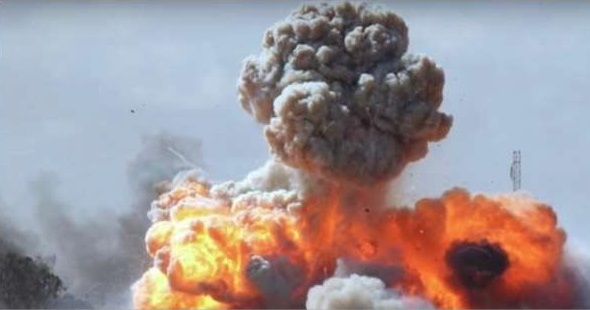
- Science & Technology Notes for UPSC IAS Prelims
- Home
- Science & Technology – Introduction
- Role of Science & Technology in Today’s Life
- Role of Science & Technology In India
- India: Development of Science & Technology
- Science & Technology Policy in India
- Information Technology
- Elements: Information Technology
- Cyber Crime & Cyber Security
- E-Infrastructure in India
- Artificial Intelligence
- Communication Technology
- Space Science & Technology
- Biotechnology
- Nanotechnology
- Ocean Technology
- Nuclear Technology
- Nuclear Energy in India
- Nuclear Energy - By Country
- India - Nuclear Program
- India - Defence Technology
- Space Exploration - Timeline
- Satellites Launched by India
- Indian Space Research Organisations
- Foreign Satellites Launched by India
- Government Space Agencies
- The DRDO
- Useful Resources
- Online Quiz
- Online Test
- Quick Guide
- Useful Resources
- Discussion
India Nuclear Program
India’s first nuclear program started in 1967. On May 18, 1974, India conducted its first nuclear weapon test. The first fusion weapon test on May 13, 1998.
India has signed and ratified two treaties, i.e., Biological Weapons Convention and the Chemical Weapons Convention. India has also taken the membership of the Missile Technology Control Regime and is also a subscribing state to The Hague Code of Conduct.

Biological Warfare of India
Consider the following points relating to the Biological Warfare of India.
India is one of the ratifying members of the Biological Weapons Convention (BWC) and it also pledged to abide by its obligations.
India possesses the scientific and technological capability to create a biological weapon, but there is as such no plan to do so.
In one of the speeches, the former President Dr. A. P. J. Abdul Kalam emphasized that "India will not make biological weapons, as is cruel to human beings".
Chemical Warfare of India
Consider the following points relating to the chemical warfare of India −
India is capable enough to produce chemical weapons, but it chooses not to do so.
India has signed and ratified the Chemical Weapons Convention (CWC), stating that it does not intend to manufacture chemical weapons.
In 1997, India had stock of chemical weapons, i.e., about 1045 tonnes of Sulphur mustard, but by the end of 2006, India has destroyed more than 70 percent of its stocked chemical materials and also promised to destroy the remaining.
Nuclear-armed Ballistic Missiles
The following table lists down the major nuclear-armed ballistic missiles of India −
| Name | Type | Maximum range (km) | Status |
|---|---|---|---|
| Prithvi-I | Short-range | 150 | Deployed |
| Prithvi-II | Short-range | 250 - 350 | |
| Prithvi-III | Short-range | 350 - 600 | |
| Agni-I | Short to medium-range | 700 - 1,250 | |
| Agni-II | Medium-range | 2,000 - 3,000 | |
| Agni-III | Intermediate-range | 3,500 - 5,000 | |
| Agni-IV | Intermediate-range | 4,000 | Tested successfully |
| Agni-V | Intermediate to Intercontinental-range | 5,000 - 8,000 | |
| Agni-VI | Submarine-launched with intercontinental-range (probable MIRV) | 6,000 | Under development |
| Agni-VI | Intercontinental-range (probable MIRV) | 8,000 - 12,000 | Under development |
| Surya | Submarine launched Intercontinentalrange MIRV | 10,000 | Yet to confirm |
| Surya | Intercontinental-range Multiple independently targetable reentry vehicle (MIRV) | 12,000 - 16,000 |
Sea-based Nuclear-Armed Ballistic Missiles
The following table lists down the major sea-based nuclear-armed ballistic missiles of India −
| Name | Type | Maximum range (km) | Status |
|---|---|---|---|
| Dhanush | Short-range | 350 | Inducted |
| Sagarika (K-15) | SLBM | 700 | Awaiting deployment on INS Arihant |
| K-4 | SLBM | 3,500 | Tested |